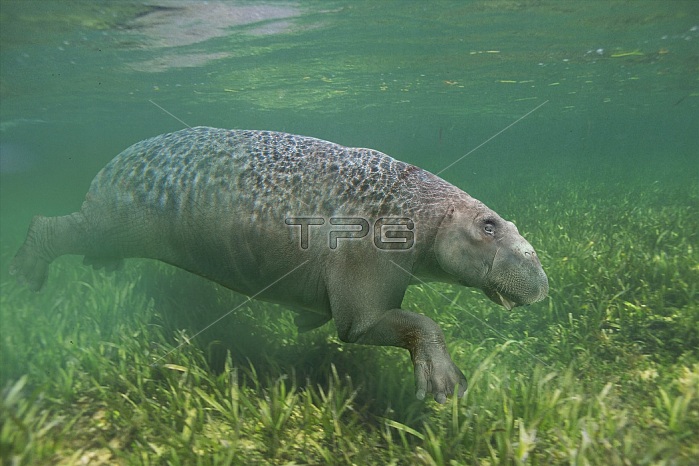
Paleoparadoxia. Illustration and photo-reconstruction of the marine mammal Paleoparadoxia. Paleoparadoxia (ancient paradox) is a genus of large, herbivorous aquatic mammals that inhabited the northern Pacific coastal region during the Miocene epoch (20 to 10 million years ago). It ranged from the waters of Japan (Tsuyama and Yanagawa), to Alaska in the north, and Baja California, Mexico, in the south. Paleoparadoxia was about 2.2 m long and weighed 900 kg. Paleoparadoxia is thought to have fed primarily on seaweeds and sea grasses. The jaws and the angle of the teeth resemble a backhoe bucket. Its bulky body was well adapted for swimming and underwater foraging, but not for extended deep-sea living or deep diving. Originally interpreted as amphibious, Paleoparadoxia is now thought to have been a fully marine mammal like their living relatives, the sirenians, spending most of their lives walking across the sea bottom like marine hippos.
| px | px | dpi | = | cm | x | cm | = | MB |
Details
Creative#:
TOP24703226
Source:
達志影像
Authorization Type:
RM
Release Information:
須由TPG 完整授權
Model Release:
N/A
Property Release:
N/A
Right to Privacy:
No
Same folder images:

 Loading
Loading